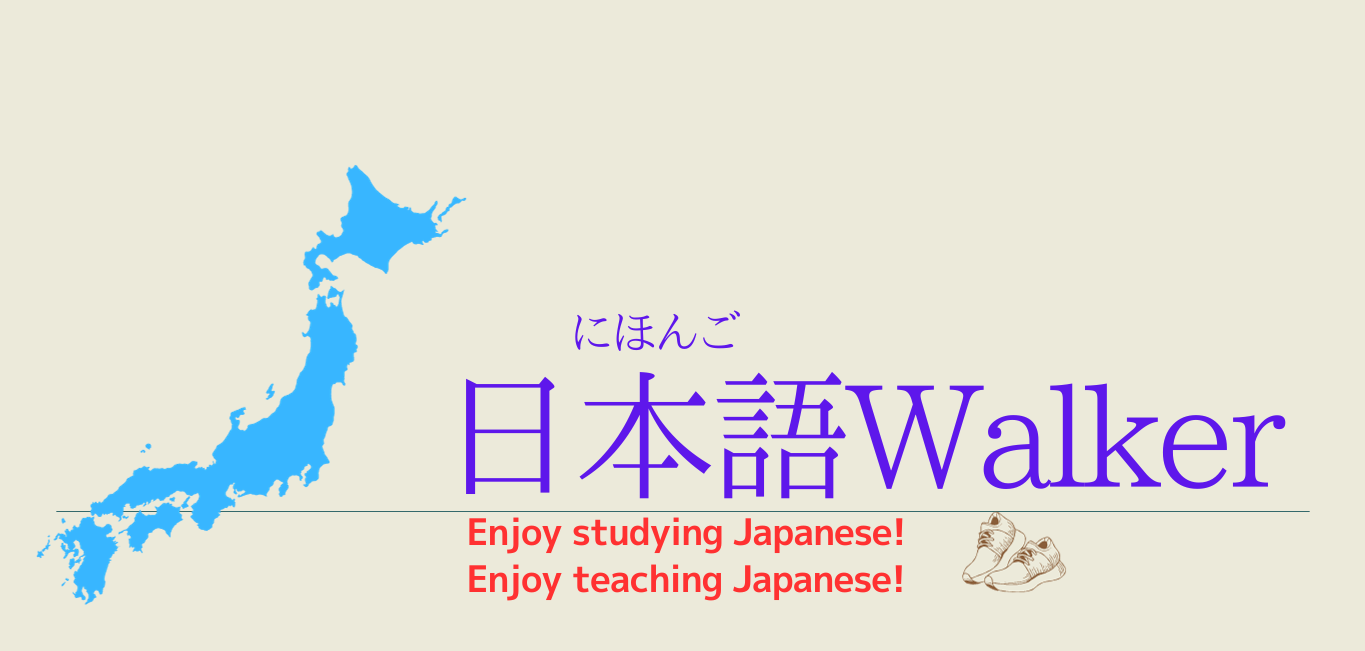「どうして漢字(かんじ)を勉強(べんきょう)しなければいけませんか?わたしたちは、ひらがなとカタカナを勉強しました。それで十分(じゅうぶん)です!」と。
ときどき、日本語の学習者(がくしゅうしゃ)が、こんなことを言(い)います。
本当(ほんとう)に、そうでしょうか??
“Why do we have to study Kanji? We have learned Hiragana and Katakana, that’s enough!”
Sometimes Japanese learners says to me like this.
Do you really think so even after reading this article ???
ひらがなだけの文は、難しい!
そういう時(とき)、私(わたし)は黒板(こくばん)にこう書(か)きます。
「うらにわにはにわにわにはにわにわとりがいます」
これ、日本人でも「え?なにこれ?」と、なります。
でも、口(くち)で言うと、日本人(にほんじん)はだいたい分(わ)かります。
高低(こうてい)アクセントで意味(いみ)を判断(はんだん)できるからです。
が、ひらがなだけの文は目で見ると、、、とっても分かりにくいですよね。
これを漢字(かんじ)を使(つか)って書くとこうなります。
「裏庭には二羽、庭には二羽、鶏がいます」
より分かりやすくするために読点(とうてん「、」)も入れましたが、
これでバッチリ意味が分かります。
At such times, I write this on the blackboard : ‘うらにわにはにわにわにはにわにわとりがいます’ using hiragana only. Even Japanese people are like, ‘Huh? What is this?’ However, when spoken, Japanese people can generally understand it because they can judge the meaning by the high and low accent. But when you look at a sentence with only hiragana, it’s very difficult to understand. When written not only in hiragana, it looks like this: ‘裏庭には二羽、庭には二羽鶏がいます’. With this, the meaning is perfectly clear. (To make it easier to understand, I added commas. )
※「裏庭には二羽、庭には二羽、鶏がいます」means:”There are two chickens in the backyard and two chickens in the garden.”
表音文字と表意文字
ひらがなやカタカナは、表音文字(ひょうおんもじ)です。
対(たい)する漢字(かんじ)は表意文字(ひょういもじ)。
表意文字は、字そのものが「意味(いみ)」を表(あらわ)しますから、一目(ひとめ)でだいたいの意味(いみ)が分かるのです。
なんて便利(べんり)なんでしょう!
「にほんのワインをのんだ」
この文も、ひらがなだけだと「にほん」の意味が分かりませんが、
漢字を使えば「日本(にほん)のワイン」なのか、「二本(にほん)のワイン」なのかが、すぐに分かります。
日本語には母音(ぼいん)が5こしかありません(あ、い、う、え、お)。子音(しいん)も少(すく)ないため、その組(く)み合(あ)わせでできる音(おと)が少ないです。
そのため、同音異義語(どうおんいぎご)がとても多(おお)い言語(げんご)です。
会話(かいわ)の場合(ばあい)は、高低アクセントと、前後(ぜんご)の文脈(ぶんみゃく)で意味(いみ)を区別(くべつ)することができます。
でも書(か)いたときに紛(まぎ)らわしい。そこで表意文字「漢字」が活躍(かつやく)するわけです。
しかも、ひらがなで書くと同じ表記(ひょうき)でも漢字で書くと違う表記になりますから、辞書(じしょ)をひくときもすぐに言葉が見つかって、便利(べんり)ですね。
Hiragana and Katakana are phonetic characters. The Kanji are ideographic characters. Ideographic characters represent the meaning of the character itself, so you can understand the meaning roughly at a glance. How convenient! For example, in the sentence “にほんのワインをのんだ”, if you only use Hiragana, you cannot understand the meaning of “にほん(nihon)”. However, if you use Kanji, you can immediately understand whether it is “Japanese (nihon) wine” or “two bottles(nihon) of wine”. Japanese has only 5 vowels (a, i, u, e, o). There are also few consonants, so there are few sounds that can be made by combining them. Therefore, Japanese is a language with many homophones. In conversation, you can distinguish the meaning by the high and low accent and the context before and after. However, it is confusing when written. That’s why ideographic characters “Kanji” are useful. Moreover, when you write in hiragana, the same notation may be different when written in kanji, so it is convenient to find words immediately when looking up a dictionary.
ひらがなだけのクイズ!
クイズです。Here is the quiz:
次(つぎ)の文(ぶん)は、どういうことか分かりますか?
What does the following sentence mean?
①あるみかんのうえにあるみかん。
②はしのはしのはしご。
正解(せいかい)は・・・The correct answer is・・・
①アルミ缶(かん)の上にある蜜柑(みかん)。
Tangerines on top of aluminum cans.

②橋(はし)の端(はし)の梯子(はしご)。
A ladder at the end of the bridge.

日本には、同音異義語(どうおんいぎご)を利用(りよう)した言葉(ことば)の遊(あそ)びが、たくさんあります。
There are many word games in Japan that use homophones.
漢字は何個(なんこ)覚えればいいの?
日本語能力試験(にほんごのうりょくしけん)では、N2で1000、N1だと2000の漢字が出題範囲(しゅつだいはんい)だとされています。
日本人が義務教育(ぎむきょういく)=小学校・中学校(しょうがっこう・ちゅうがっこう)で勉強(べんきょう)する漢字も、約(やく)2000です。
つまり、2000覚(おぼ)えれば日本での生活(せいかつ)で大きく困(こま)ることはないということです。
まあ、2000覚えるなんて・・・目が回るほど大変(たいへん)ですけどね・・・。
The JLPT tests 1000 Kanji for N2 and 2000 kanji for N1 level. Japanese students also learn about 2000 kanji during their compulsory education, which includes elementary school and junior high school. In other words, if you can memorize 2000 kanji, you will not face significant difficulties in your life in Japan. Well, memorizing 2000 kanji is quite a challenge… it’s enough to make your head spin! 😵
漢字ってクールだと思いませんか?
でも漢字ってかっこいいと思いませんか?
以前(いぜん)、とある外国(がいこく)の方(かた)が腕(うで)に「台所」とタトゥーして歩(ある)いているのを見かけました。「台所」というのは、「だいどころ」、kitchenという意味です。

思(おも)わず笑(わら)ってしまいました。
きっとその人にとっては漢字の形(かたち)がかっこよく思えたのでしょう。
もしくは、料理人(りょうりにん)さんだったのか・・・???
この「台所」のタトゥーを入れている外国人はけっこういるようです。
インターネットでは、「台風(たいふう、Typhoon)」と間違えたのではないか、という説もありました!
とにかく、謎(なぞ)です。
でも、やっぱり漢字は形(かたち)がかっこいいと思います。
そして、漢字がどれぐらい書けて、読めるかが、子どもと大人の違(ちが)いだとも思います。
・・・実(じつ)は、これを書いている日本語教師(にほんごきょうし)である私(わたし)も、漢字はあまり得意(とくい)ではありません!
が、頑張(がんば)っています。
いっしょに頑張りましょう!
Japanese kanji characters are indeed very cool! Don’t you think so? 😎I once saw a foreigner with a tattoo of the word “台所” on their arm. “台所” means “kitchen” in Japanese. I couldn’t help but laugh.I’m sure that person thought the shape of the kanji looked cool.…Or maybe he was a chef…? I heard that there are quite a few foreigners who have tattoos of ”台所”. There is a THEORY that some people might have mistaken “台風”(typhoon) for “台所”,…!Anyway, it is a mystery. But I still think kanji characters look cool because their shapes are so unique. I also believe that the ability to read and write kanji is what sets adults apart from children. …Actually, as a Japanese language teacher, I’m not very good at kanji myself! But I’m doing my best.
Let’s work hard together!


コメント